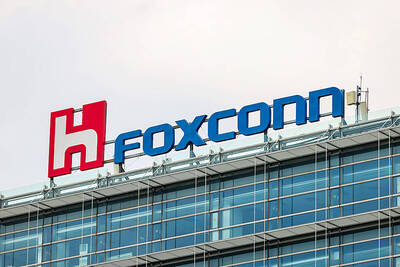Local electronics manufacturers are expected to hold the upper hand over television makers in the liquid-crystal-display (LCD) TV industry, due to better cost control and sufficient panel supply, industry analysts said yesterday.
The question was asked whether electronics makers or TV makers would be able to win more orders when both sides started expanding aggressively last year.
"I'll bet on electronic companies," said Ken Ko (
Strict cost management and the ability to supply massive volume will give an advantage to electronics manufacturers to meet the world's voracious appetite for LCD TVs by 2006, Ko said in the institute's latest report, released yesterday.
According to Topology's projection, the global demand for LCD TVs will soar to around 30 million sets by 2006. This year the demand will be about 10 million sets, double that of last year, the market researcher predicted.
Steven Tseng (
"Electronics makers have high hopes of repeating their success in the computer area," Tseng said. "Because the lucrative part will be providing original design manufacturing [ODM] services rather than brand business, to which Taiwan's TV makers still hold on to."
To vie for ODM orders, global logistics and inventory management will be a challenge for local TV brands such as Sampo Corp (
Sampo and Teco Electric & Machinery Co (
In the meanwhile, consumer electronics maker BenQ Corp (
"But the situation could reverse in the second half of 2005 ahead of the emergence of a jump in demand," Ko said. "By then, electronics companies will be able to catch up in technology."
Besides, the supply of flat panels will also be a key factor in determining who will be the winners, he said.
With sufficient supply within their groups, Quanta Computer Inc (
Quanta now supplies Gateway Inc, Dell Inc and Panasonic with LCD TVs among other vendors and it expects to ship around 400,000 sets this year, Ko added.
However, he warned that small electronics makers, which switched to the emerging LCD TV industry for a new growth area, could be forced out of the market ahead of 2006 when demand takes off.

SEEKING CLARITY: Washington should not adopt measures that create uncertainties for ‘existing semiconductor investments,’ TSMC said referring to its US$165 billion in the US Taiwan Semiconductor Manufacturing Co (TSMC, 台積電) told the US that any future tariffs on Taiwanese semiconductors could reduce demand for chips and derail its pledge to increase its investment in Arizona. “New import restrictions could jeopardize current US leadership in the competitive technology industry and create uncertainties for many committed semiconductor capital projects in the US, including TSMC Arizona’s significant investment plan in Phoenix,” the chipmaker wrote in a letter to the US Department of Commerce. TSMC issued the warning in response to a solicitation for comments by the department on a possible tariff on semiconductor imports by US President Donald Trump’s

‘FAILED EXPORT CONTROLS’: Jensen Huang said that Washington should maximize the speed of AI diffusion, because not doing so would give competitors an advantage Nvidia Corp cofounder and chief executive officer Jensen Huang (黃仁勳) yesterday criticized the US government’s restrictions on exports of artificial intelligence (AI) chips to China, saying that the policy was a failure and would only spur China to accelerate AI development. The export controls gave China the spirit, motivation and government support to accelerate AI development, Huang told reporters at the Computex trade show in Taipei. The competition in China is already intense, given its strong software capabilities, extensive technology ecosystems and work efficiency, he said. “All in all, the export controls were a failure. The facts would suggest it,” he said. “The US

The government has launched a three-pronged strategy to attract local and international talent, aiming to position Taiwan as a new global hub following Nvidia Corp’s announcement that it has chosen Taipei as the site of its Taiwan headquarters. Nvidia cofounder and CEO Jensen Huang (黃仁勳) on Monday last week announced during his keynote speech at the Computex trade show in Taipei that the Nvidia Constellation, the company’s planned Taiwan headquarters, would be located in the Beitou-Shilin Technology Park (北投士林科技園區) in Taipei. Huang’s decision to establish a base in Taiwan is “primarily due to Taiwan’s talent pool and its strength in the semiconductor

French President Emmanuel Macron has expressed gratitude to Hon Hai Precision Industry Co (鴻海精密) for its plan to invest approximately 250 million euros (US$278 million) in a joint venture in France focused on the semiconductor and space industries. On his official X account on Tuesday, Macron thanked Hon Hai, also known globally as Foxconn Technology Group (富士康科技集團), for its investment projects announced at Choose France, a flagship economic summit held on Monday to attract foreign investment. In the post, Macron included a GIF displaying the national flag of the Republic of China (Taiwan), as he did for other foreign investors, including China-based